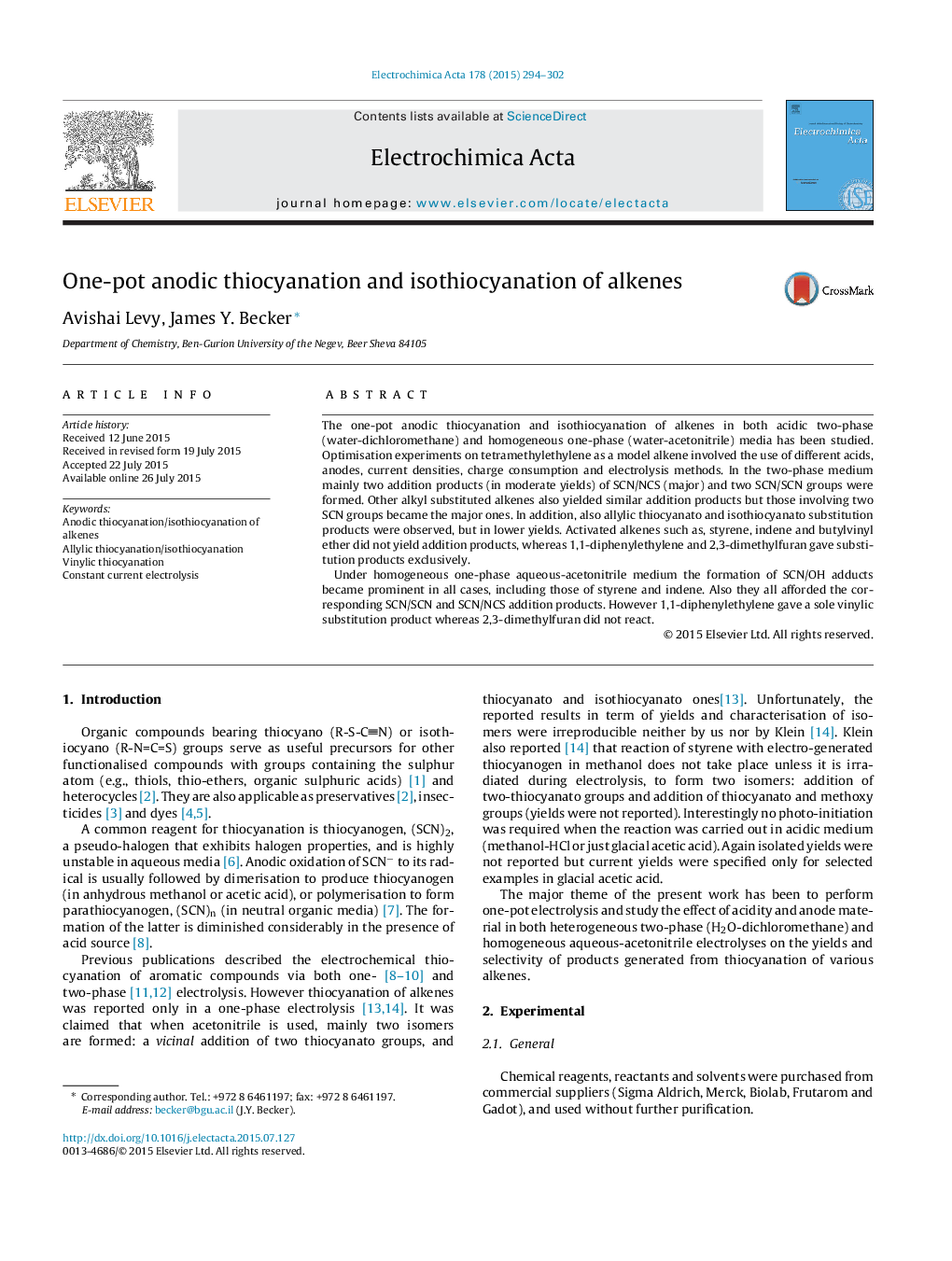| کد مقاله | کد نشریه | سال انتشار | مقاله انگلیسی | نسخه تمام متن |
|---|---|---|---|---|
| 183685 | 459556 | 2015 | 9 صفحه PDF | دانلود رایگان |
• Anodic oxidation of thiocyanate anions was conducted in the presence of non- and conjugated alkenes
• Electrolysis was performed at various anodes (carbon rod, carbon felt, glassy carbon, Pt and PbO2), acids, charge density and electricity consumption, using constant current electrolysis
• Addition of two groups of SCN/NCS and 2SCN were among the major products
• Some alkenes afforded also allylic or vinylic substitution products
The one-pot anodic thiocyanation and isothiocyanation of alkenes in both acidic two-phase (water-dichloromethane) and homogeneous one-phase (water-acetonitrile) media has been studied. Optimisation experiments on tetramethylethylene as a model alkene involved the use of different acids, anodes, current densities, charge consumption and electrolysis methods. In the two-phase medium mainly two addition products (in moderate yields) of SCN/NCS (major) and two SCN/SCN groups were formed. Other alkyl substituted alkenes also yielded similar addition products but those involving two SCN groups became the major ones. In addition, also allylic thiocyanato and isothiocyanato substitution products were observed, but in lower yields. Activated alkenes such as, styrene, indene and butylvinyl ether did not yield addition products, whereas 1,1-diphenylethylene and 2,3-dimethylfuran gave substitution products exclusively.Under homogeneous one-phase aqueous-acetonitrile medium the formation of SCN/OH adducts became prominent in all cases, including those of styrene and indene. Also they all afforded the corresponding SCN/SCN and SCN/NCS addition products. However 1,1-diphenylethylene gave a sole vinylic substitution product whereas 2,3-dimethylfuran did not react.
Figure optionsDownload as PowerPoint slide
Journal: Electrochimica Acta - Volume 178, 1 October 2015, Pages 294–302
